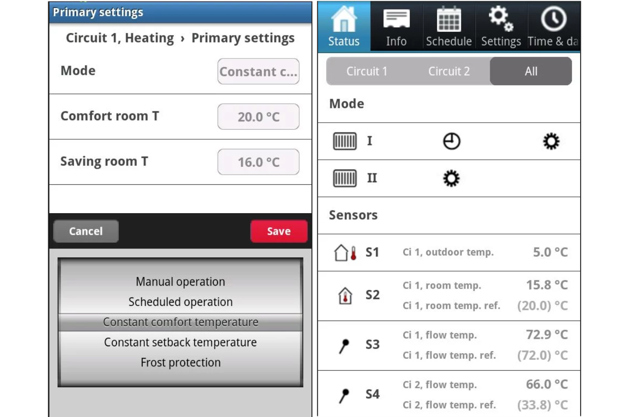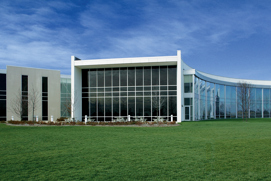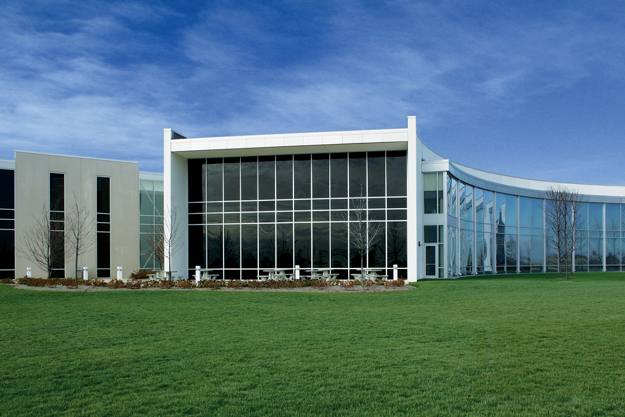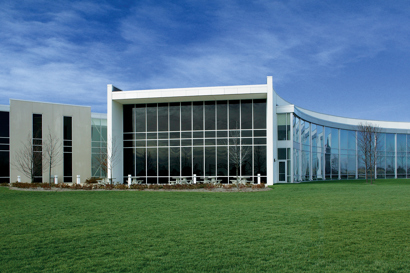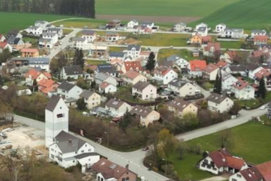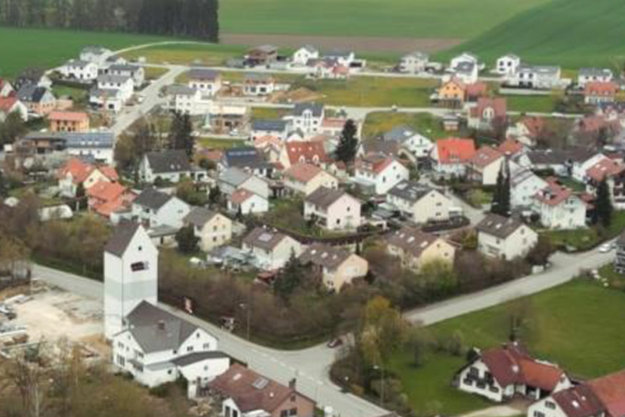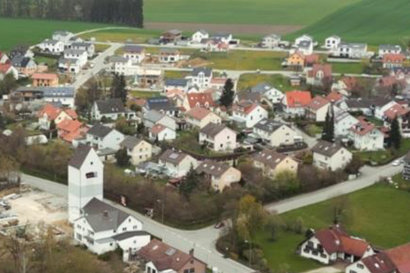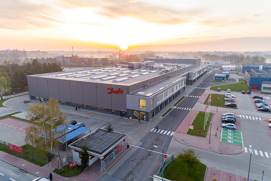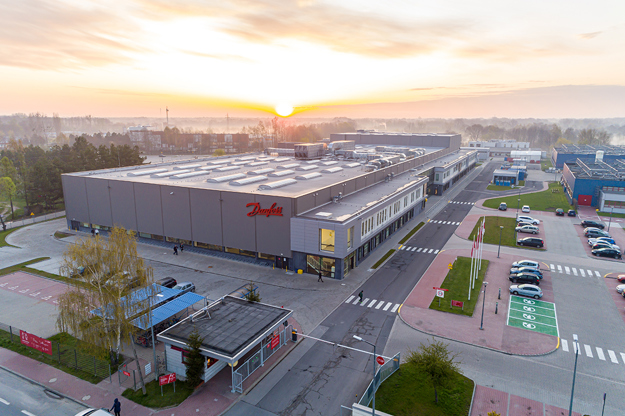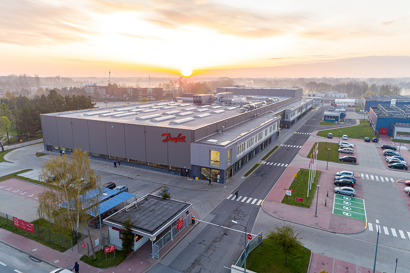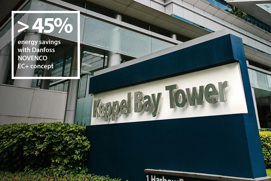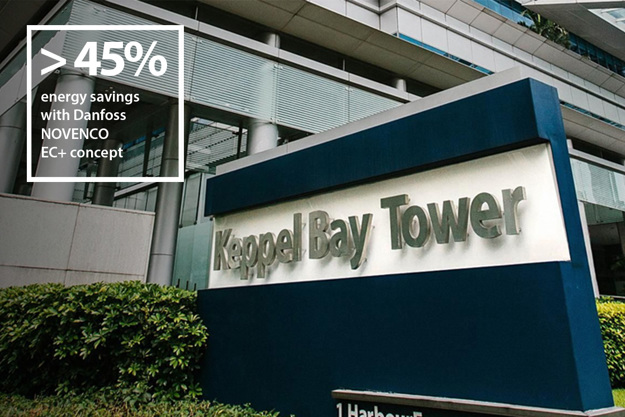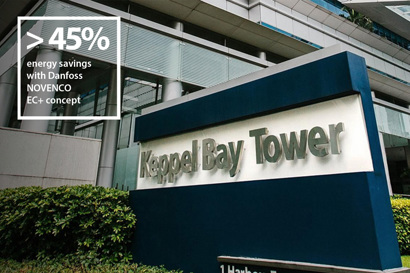In case of limited access to the basement or heating system, the electronic controller (ELC) can be supplemented with a remote control unit, ECA 30/31, which can be placed at any desired location in the building.
This enables room temperature monitoring and control, easy interfacing, and remote access for overriding all the functions of the ECL Comfort controller.
The remote control units ECA 30 and 30 are used for room temperature control and override of the ECL Comfort 210 and 310 controllers.
The remote control units are connected to the ECL Comfort controllers by means of 2 × twisted pair cables for communication and power supply (ECL 485 communication bus).
The remote control unit ECA 61 is used for room temperature control and override of the ECL Comfort 110 controller. The DLG is a gateway used for linking ECL Comfort 110 with Danfoss Living™ radiator thermostats.
Features and benefits
Can be placed at any desired location in the building
Enables monitoring, control and easy interfacing of the ECL Comfort controller
11 - 15% savings or more on your energy consumption in the building, as well as reduced CO2 emissions.
Tools and apps
FAQ
Case stories
-
if (isSmallPicture) {


 Ventilation is more energy-efficient in this Illinois factory
Ventilation is more energy-efficient in this Illinois factoryUSA: The Danfoss Loves Park factory upgraded existing ventilation with the Danfoss Novenco EC+ concept, achieving a 59.8% reduction in emissions compared to the previous system.
-
if (isSmallPicture) {


 Danfoss partners with the city of Banja Luka to decarbonize district energy
Danfoss partners with the city of Banja Luka to decarbonize district energyThe Challenge: Renovate 34 of the city’s largest heating substations
The Solution: Danfoss Leanheat® Monitor enables full substation digitalization
The Results: reduced heat consumption by 10% -
if (isSmallPicture) {


 Wind tunnel achieves 99.5% uptime with Danfoss DrivePro®
Wind tunnel achieves 99.5% uptime with Danfoss DrivePro®Belgium: Thanks to Danfoss DrivePro® services, LuxFly has achieved 99,5% uptime in Europe’s largest vertical wind tunnel that is used for skydiving.
-
if (isSmallPicture) {


 Successful transition from oil boilers to a local heating network in Eurasburg
Successful transition from oil boilers to a local heating network in EurasburgIn the Wittelsbacher Land near Augsburg the local network in Eurasburg supplies heat to 80 buildings using a wood chip heating system. Danfoss’ substations ensure efficient heating in all building types, and its modern SCADA solution enables remote system monitoring and management.
-
if (isSmallPicture) {


 How did this smart factory reach carbon-neutral?
How did this smart factory reach carbon-neutral?POLAND: The new Danfoss production hall in Grodzisk Mazowiecki has reached carbon-neutrality, thanks to full electrification, energy-saving solutions such as Danfoss drives, and energy from renewable sources.
-
if (isSmallPicture) {


 Retrofitting Keppel Bay Tower for a Zero Energy future
Retrofitting Keppel Bay Tower for a Zero Energy futureSINGAPORE: With Danfoss EC+ concept for HVAC systems, Keppel Bay Tower uses 45% less energy and has achieved Green Mark Platinum Zero Energy building status.


